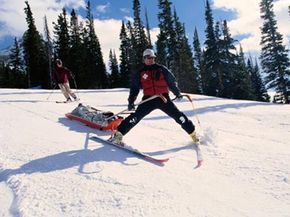It started as an innocent hike, but it quickly turned life threatening. Three miles out, part of the trail gave way beneath your friend's feet. Now she's on the forest floor with a broken leg, and the mountains seem to be blocking your cell-phone signal. If you go to get help, you're going to have to leave her here -- unable to walk and shivering with shock in the chilly autumn air. It's going to take you at least an hour to get back to the base camp. How can you get your friend to medical help -- or medical help to her?
You're in luck. The area has a volunteer search and rescue (SAR) team. They can get to the trail sooner than the emergency personnel of the nearest town can. Within two hours, your friend is under a blanket, woozy with painkillers and strapped to a stretcher on the back of an all-terrain vehicle.
Advertisement
Your friend is safe, but the experience makes you think. Who are these people who give their time to rescue others? And, what would it be like to do something like that?
Many communities across North America have volunteer SAR teams. These teams help in times of need. They might help police comb the area for a missing child. They might help Red Cross teams assist flood victims. They might help authorities recover victims from a major accident and administer triage.
Most SAR teams are NGOs, or non-governmental organizations. They have come together as groups of concerned citizens, and they rely on their communities for support. Many teams have federal 501(c)(3) status -- meaning they operate as nonprofits and may accept charitable donations [source: NAVSAR].
In this article, we'll take a look at how to volunteer for your local SAR team, including the gear you might need and the training you'll have to get. We'll also explore the all-important role of dogs in search and rescue. First up: the search-and-rescue jobs you might find yourself doing.
Advertisement

